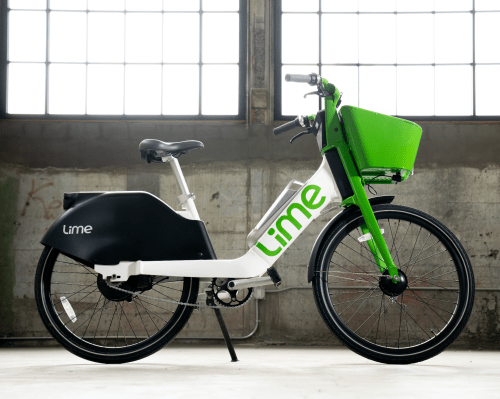Lime is finally making good on its promise to deliver its Gen4 e-bike to the streets after first announcing plans to introduce the new hardware last March. The new bikes will have a swappable battery that’s interchangeable with Lime’s latest generation of e-scooters.
The micromobility operator launched Wednesday 250 of its new bikes in Washington, D.C., where it plans to gradually replace the full fleet of 2,500 e-bikes by April, according to Russell Murphy, senior director of corporate communications. Lime will continue to launch in cities globally, swapping out older generations for the new model in each city over the next year.
This move is part of a $50 million investment the company has directed toward the development of the new e-bike and its expansion to another 25 cities in North American, Europe, Australia and New Zealand.
The last generation of Lime e-bikes can be found in 50 markets globally, including London, Seattle, Paris, Denver and soon Charleston, South Carolina. Lime had initially aimed to launch the Gen4 e-bike in the summer of 2021, but had to delay save for a few pilots last autumn due to supply chain issues, said Murphy.
The swappable battery is the most notable feature of Lime’s new green-and-white bike, which matches the appearance of Lime’s latest Gen4 scooter.
“This is a potential leap forward for the industry,” Murphy told TechCrunch. “If you have one battery between vehicle types, you can operate a more streamlined multimodal fleet.”
Lime expects the battery upgrade to lead to improved unit economics. Since vehicles won’t have to be taken in to charge, there will be fewer operational tasks, which tend to be one of the highest costs associated with running a shared micromobility business. At the same time, by only needing to swap out the battery, there will be more vehicles on the street for longer, providing better reliability to riders and a higher potential for earning revenue, said Murphy.
“It will also mean one team can do every charge task instead of having one charge team for bikes and one for scooters,” he said.
The new e-bike will also have an improved motor that will help riders climb hills more easily, a phone holder, a new handlebar display that matches that of the Gen4 scooter and an automatic two-speed transmission that allows for a smoother start, rather than having to pedal a bit to get the motor going.
Lime’s plans to continue scaling its e-bikes are in line with the company’s stated goals to refresh a significant portion of its fleet, move into more cities and develop new technologies to win additional city requests for proposal. In November, the micromobility giant closed a $523 million raise in convertible debt and term loan financing, which is potentially the company’s last funding round before it plans to go public this year.
As Lime preps itself for public markets, it’s working on strengthening its considerable hold on the industry by becoming more operationally efficient and getting its hardware on point, and the introduction of this upgraded e-bike reinforces that. Meanwhile, as Lime tries to scoop up every permit it can get its hands on, competitor Spin, which is owned by Ford, shared plans last week to lay off a quarter of its staff as part of its restructuring process to exit open permit markets. Spin is now winding down operations in a few U.S. markets, all markets in Germany and Portugal and could shut down in Spain as early as February.
Correction: A previous version of this article stated the bike would have a phone holder that charges smartphones.
